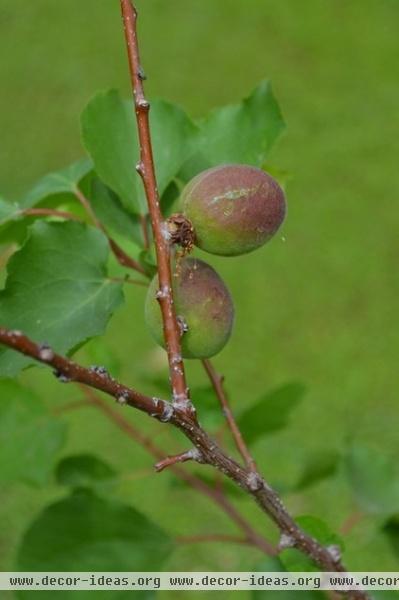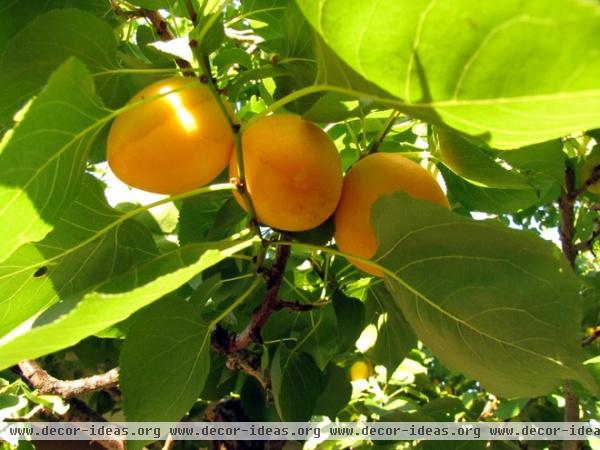How to Grow Your Own Apricots
If you can grow apricots, you’re in luck. The trees themselves are beautiful, with mottled bark, beautiful blossoms in early spring and dark green leaves. They’re also ideal for smaller gardens, as even the standard varieties rarely reach more than 20 feet tall.
Although they have a reputation for being delicate, that applies mainly to the fruit. Apricot trees are surprisingly cold tolerant, which means you can technically grow them in cold-winter areas. If you want fruit, though, your best bet for growing apricots is in a climate like California’s. They blossom so early that frost often destroys the blooms before the fruit can set. While most varieties want some winter chill, they also do best where springs are warm and not too wet. Still, breeders are pushing the range; checking with your local county extension office and nurseries might uncover a variety for your area.

Where to grow: In areas with early spring weather that isn’t too wet. You’ll be most successful in USDA zones 7 through 9, but give it a try in zones 4 through 6 as well.
Favorites: Autumn Glo, Autumn Royal, Blenheim, Flora Gold, Goldcot, Gold Kist, Harcot, Manchurian Bush, Montrose, Moongold, Moorpark, Newcastle, Nugget, Pixie-cot, Puget Gold, Royalty, Sungold, Tomcot, Wenatchee

Planting guidelines: Plant bare-root trees in late winter or early spring in colder climates; in fall in warmer climates. Bare-root trees predominate in the market, but there may be some available in containers. Do not plant where you’ve grown other plants that may develop verticillium wilt, such as tomatoes and eggplants.
Care requirements: Water newly planted trees deeply and regularly throughout the blossoming and growing season. Adding mulch around the trees (keep it 3 inches away from the trunks) will help conserve water and prevent bruising on fallen fruit. Water mature trees deeply but only occasionally.
Feeding: Apply a low-nitrogen fertilizer in the spring.
Thinning: Thin immature fruit about halfway through the growing season when the fruit is about the size of a quarter. Spacing recommendations vary from 1 to 4 inches; just be sure the full-size fruit won’t touch. (The apricot in the middle of the cluster in this photo is a good candidate for pruning.)
Pruning: You have a couple of options when pruning. Start when planting, shaping the tree to have either an open center or a modified central leader, where the central trunk is encircled by evenly placed lower branches, then topped with a vase-like cluster of upward-growing branches. After that, unlike with most fruit trees, prune just after harvesting the fruit to prevent diseases from spreading during the wet season. Prune primarily to keep the tree in shape and remove dead, diseased or crossing branches. The fruit will form on spurs off the previous year’s growth, so you’ll want to keep those. Once a spur no longer produces fruit, remove it.
Pests and diseases: Fungal diseases can be a problem with apricots. These diseases include black knot, brown rot, canker, leaf spot, powdery mildew and silver leaf. Other diseases may be prevalent in certain areas; check with nurseries and cooperative extension services and look for disease-resistant varieties. Pest problems include nematodes and aphids. A preventative spray schedule is probably your best bet for controlling these problems.
Keeping birds and squirrels out of your crop is another issue. Netting and shiny objects may help somewhat. To defeat squirrels, fake predators or a backyard dog or cat may be your best bet.
Harvest: Harvest time varies, depending on variety, from early summer to midsummer, but overall the season is pretty short. Pick when the fruit is fully orange and slightly soft. Gently twist the stem to remove the fruit. Use the fruit quickly; apricots don’t keep well unless they’re preserved or dried.












